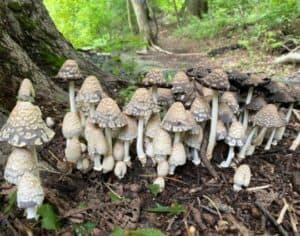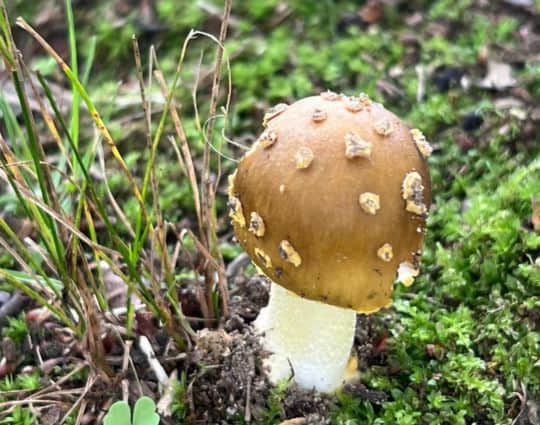In contribution to the 4th annual Sheldrake Backyard BioBlitz, Westchester residents served as citizen scientists throughout the week of July 16-22, 2023. Participants were asked to take pictures of nature from anywhere in Westchester County during this timeframe and upload them to the iNaturalist app. Our 17 teams, with an additional 8 iNaturalist observers, made a total of 460 observations, covering 188 species.
The big news of this year’s BioBlitz was the large number of observations of fungi! Our Nature FBI team had the greatest number of fungi observations, coming in at 15. The Ponder team’s 11 observations of fungi were the second largest number and represent an even bigger share of their total observations than Nature FBI (33% versus 20%).
Why was that? Did we just have a lot of successful fungi hunters this year? Or, does the uptick in observations this year reflect something else in nature? Well, to answer that, we need to understand a bit about how fungi grow.

Fungi are neither plants nor animals; they are in their own kingdom. Their life cycle differs in many ways from members of those other kingdoms, including their reproduction. They don’t have seeds or eggs but rather spores that are produced and released from their above-ground fruiting body. The spores travel, often with the wind, and land on soil, rocks, moss, or trees. The spores remain dormant until environmental conditions are favorable. Only then will the spores germinate and new fungi grow. Several factors are crucial for this, a big one being sufficient moisture, usually in the form of rain. How long from a big rainfall to the appearance of fungi? This depends on the species and could be anywhere from 1 day to 2 weeks after a significant rainfall.
So, I started investigating. I researched rainfall in Westchester utilizing data from the White Plains Airport weather station. Last year, in the two weeks before the BioBlitz it rained only .02 inches. This year, in that same timeframe, it rained over 3.81 inches. That’s a 19,000 percent increase in the rain! Perhaps that was one of the contributors to the significant increase in fungi and fungi observations this year.
Observations made by citizen scientists help give professional scientists an accurate picture of the diversity of life in Westchester County.
We look forward to the 5th annual Backyard BioBlitz in 2024!
~Jocelyn Kleinman, Director of Education

